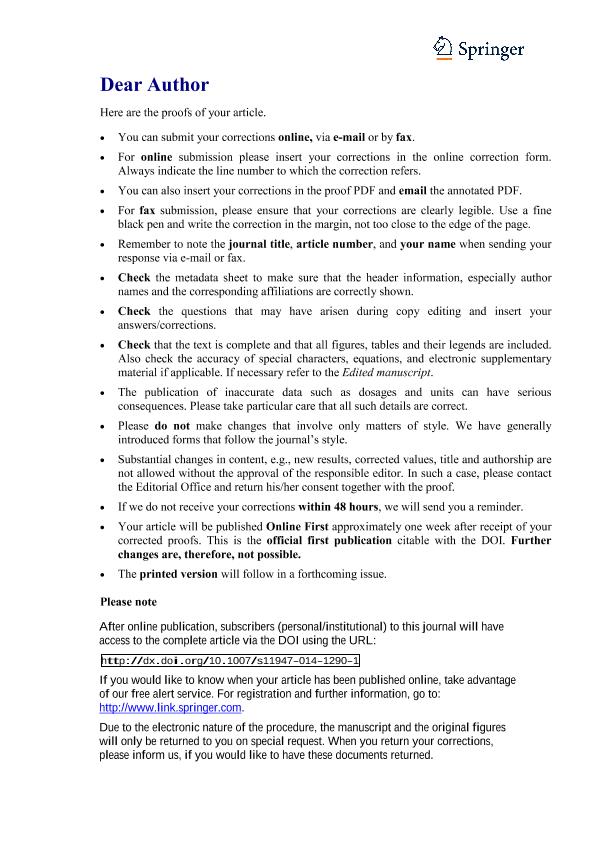Mostrar el registro sencillo del ítem
dc.contributor.author
Huck Iriart, Cristián

dc.contributor.author
Rincón Cardona, Jaime A.

dc.contributor.author
Herrera, Maria Lidia

dc.date.available
2016-07-18T20:18:18Z
dc.date.issued
2014-02
dc.identifier.citation
Huck Iriart, Cristián; Rincón Cardona, Jaime A.; Herrera, Maria Lidia; Stability of Whey Protein Concentrate/ Sunflower Oil Emulsions as Affected by Sucrose and Xanthan Gum; Springer; Food and Bioprocess Technology; 7; 9; 2-2014; 2646-2656
dc.identifier.issn
1935-5130
dc.identifier.uri
http://hdl.handle.net/11336/6581
dc.description.abstract
The effect of the addition of sucrose and xanthan gum, protein concentration, and processing method on the stability and destabilization mechanism type of emulsions formulated with two commercial whey protein concentrate powders was described and quantified following system changes with a Turbiscan TMA 2000, a light scattering equipment and a confocal laser scanning microscope. Two different processing methods that gave particle sizes with different orders of magnitude were compared: homogenization by ULTRA-TURRAX (UT) and by ultrasound (US). The addition of sucrose to the aqueous phase of emulsions significantly diminished volume-weighted mean diameter (D 4,3 ) and improved stability. When the aqueous phase contained xanthan gum, the main destabilization mechanism for UT emulsions changed from creaming to flocculation. For US emulsions, although some aggregation was detected by confocal laser scanning microscopy, it was not great enough to modify the backscattering average (BS av ) in the middle zone of the tube (20?50 mm). At low protein concentrations, the profiles corresponded to destabilization of small aggregates. In those conditions, creaming was markedly enhanced as evident from creaming rate values. Independently of aqueous phase composition, US emulsions stabilized by protein concentrations higher than 5 wt% were stable, indicating that whey proteins were good emulsion stabilizers at pH close to 7. This study shows the relevance of protein type on stability and describes for the first time a behavior for whey proteins different from the one reported for caseins in literature.
dc.format
application/pdf
dc.language.iso
eng
dc.publisher
Springer

dc.rights
info:eu-repo/semantics/openAccess
dc.rights.uri
https://creativecommons.org/licenses/by-nc-sa/2.5/ar/
dc.subject
Turbiscan
dc.subject
Destabilization Mechanisms
dc.subject
Protein Concentration
dc.subject
Particle Size
dc.subject
Aqueous Phase Additives
dc.subject.classification
Química Coloidal

dc.subject.classification
Ciencias Químicas

dc.subject.classification
CIENCIAS NATURALES Y EXACTAS

dc.title
Stability of Whey Protein Concentrate/ Sunflower Oil Emulsions as Affected by Sucrose and Xanthan Gum
dc.type
info:eu-repo/semantics/article
dc.type
info:ar-repo/semantics/artículo
dc.type
info:eu-repo/semantics/publishedVersion
dc.date.updated
2016-07-15T17:21:39Z
dc.journal.volume
7
dc.journal.number
9
dc.journal.pagination
2646-2656
dc.journal.pais
Alemania

dc.journal.ciudad
Berlin
dc.description.fil
Fil: Huck Iriart, Cristián. Universidad de Buenos Aires. Facultad de Ciencias Exactas y Naturales; Argentina. Consejo Nacional de Investigaciones Científicas y Técnicas. Oficina de Coordinación Administrativa Ciudad Universitaria. Instituto de Química, Física de los Materiales, Medioambiente y Energía; Argentina
dc.description.fil
Fil: Rincón Cardona, Jaime A.. Universidad Nacional de San Martín. Instituto de Investigación E Ingeniería Ambiental; Argentina
dc.description.fil
Fil: Herrera, Maria Lidia. Universidad de Buenos Aires. Facultad de Ciencias Exactas y Naturales; Argentina
dc.journal.title
Food and Bioprocess Technology

dc.relation.alternativeid
info:eu-repo/semantics/altIdentifier/doi/10.1007/s11947-014-1290-1
dc.relation.alternativeid
info:eu-repo/semantics/altIdentifier/doi/http://dx.doi.org/10.1007/s11947-014-1290-1
dc.relation.alternativeid
info:eu-repo/semantics/altIdentifier/url/http://link.springer.com/article/10.1007/s11947-014-1290-1
Archivos asociados
